Indoor plants are an excellent way to enhance your home’s ambiance. They not only bring nature inside but also improve physical and mental health. But, let’s be honest, plant care can feel daunting, especially for novice green thumbs. That’s why we’ve curated a list of resilient houseplants that can weather some neglect, making them the best indoor plants for beginners.
So whether you’re considering a charming little succulent for your windowsill or a tall, imposing plant to occupy a living room corner, we’ve got a low-maintenance houseplant for you. Remember, these houseplants are forgiving and, with some care, will reward you with lush growth.
Table of Contents
1. ZZ Plant (Zamioculcas zamiifolia)
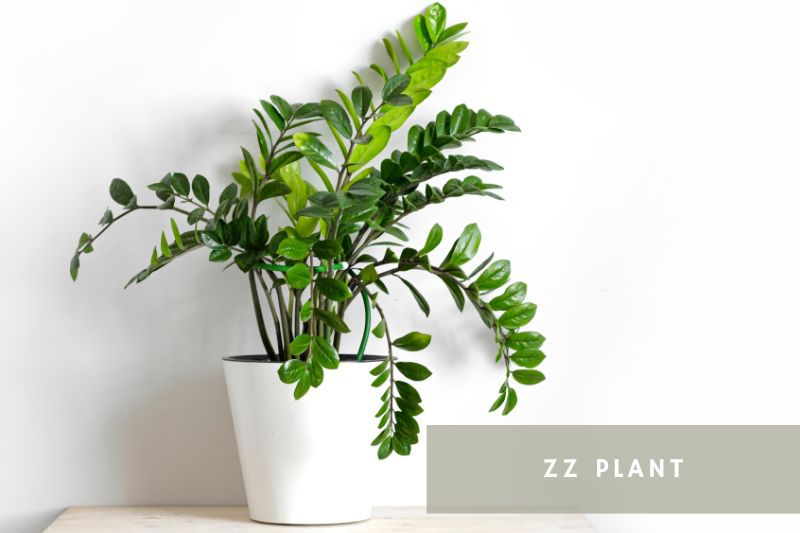
Also known as the “Eternity Plant,” the ZZ plant is the epitome of low maintenance houseplants. Thriving in low light and needing only occasional watering, it’s excellent for novice plant parents. Do note that it’s toxic to humans and pets, so it’s not the best choice for pet-friendly households.
And if you’re looking for more visual interest, consider the ’Dowon’ cultivar, which comes with jet-black leaves that beautifully contrast the green new growth.
- Native to: Eastern Africa
- Mature size: Up to 3 ft tall
- Perfect for: Low light conditions, first-time plant parents
You should also know that that the main cause of death in this case is too much love, so make sure to check out our guide on how to care for your ZZ plant!
2. Golden Pothos (Epipremnum Aureum)
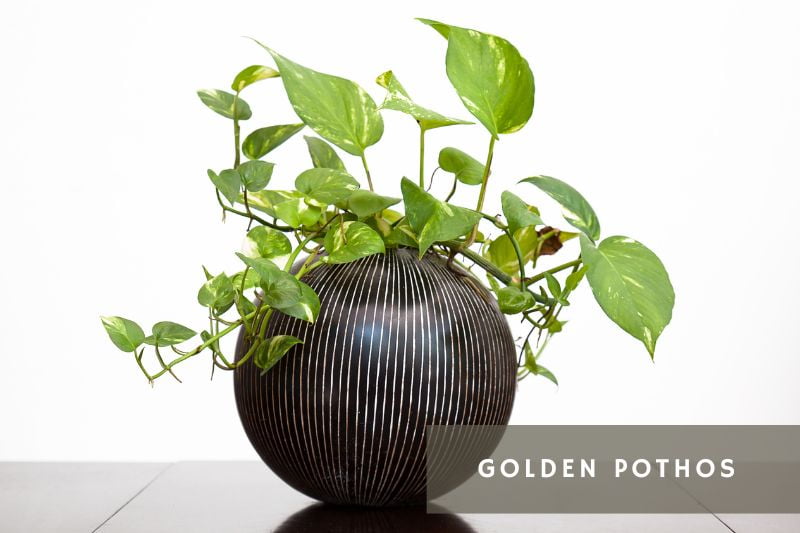
The Golden Pothos, with its striking green and gold leaves, is a steadfast houseplant. Known for its resilience, this plant can survive in various light conditions, from low to bright, and doesn’t require constant watering. It’s a perfect choice for those of us who sometimes forget to tend to our leafy friends!
- Native to: French Polynesia
- Mature size: Trailing up to 10 ft long
- Perfect for: Adding vibrant greenery in low to medium light spaces
We also wrote an article highlighting some of the unique and lesser-known types of pothos you can add to your collection.
3. Philodendrons
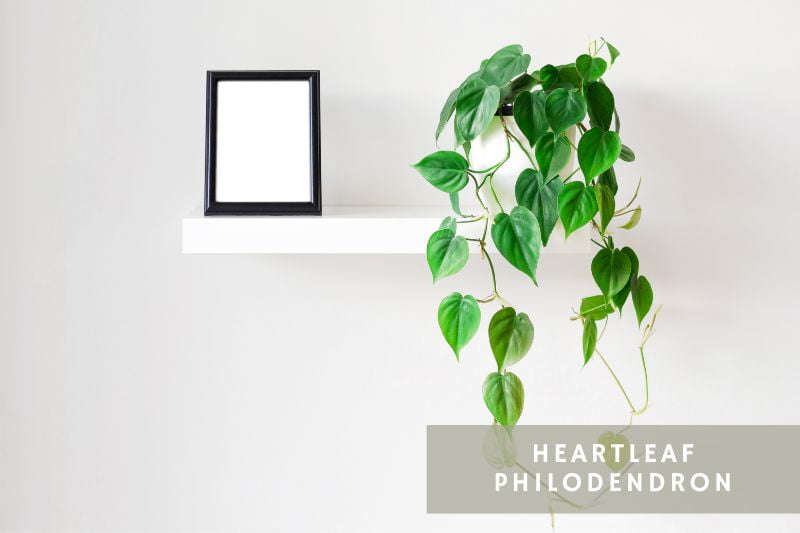
From heart-leaf varieties to elephant ear, Philodendrons come in many interesting shapes and sizes. They’re a must for anyone looking to diversify their indoor jungle. Adaptable to various lighting conditions and forgiving of occasional watering lapses, these plants are a true beginner’s friend.
And if you’re interested in learning more about the many varieties of Philodendrons available, check out this article for more information.
- Native to: Tropical Americas
- Mature size: Varies by species
- Perfect for: Variety in shapes, colors, and sizes
4. Ponytail Palm (Beaucarnea recurvata)
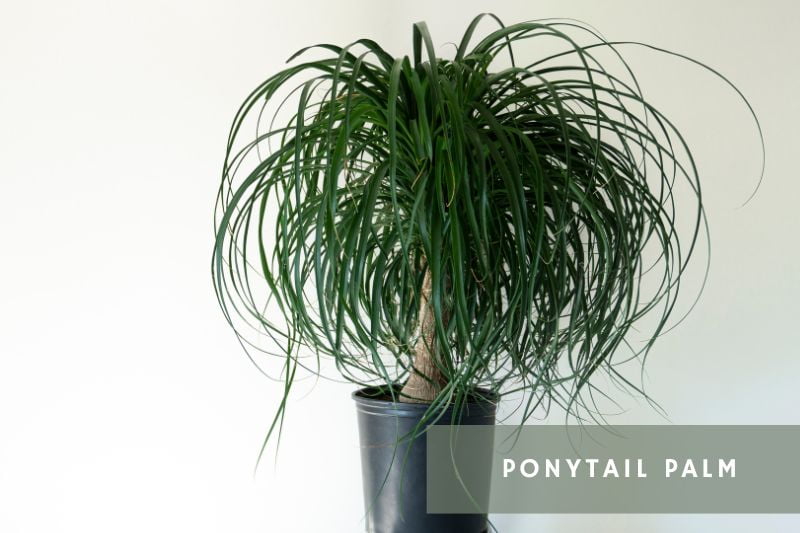
Despite its name, the Ponytail Palm is not a palm but a succulent, sporting a peculiar water-storing trunk and curly, hair-like leaves. This plant almost thrives on neglect, making it an excellent choice for the forgetful waterers among us. Plus, its unusual looks are sure to make it a conversation starter in your home!
- Native to: Eastern Mexico
- Mature size: Up to 3 ft indoors
- Perfect for: Those who love unique aesthetics and forget to water their plants
5. Snake Plant (Sansevieria spp.)
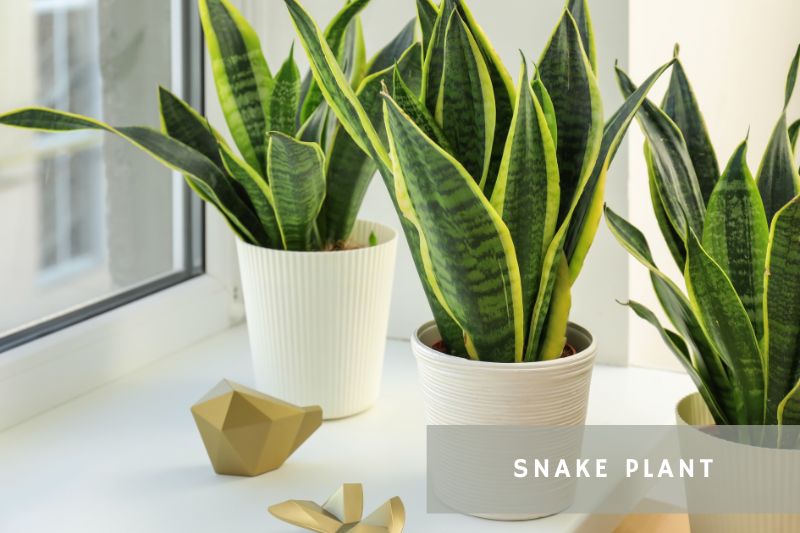
Snake Plant is a resilient companion that won’t hold it against you if you forget to water it. As an added bonus, it’s one of the few plants that releases oxygen at night, making it a perfect addition to your bedroom.
The best part about snake plants is their diverse range of shapes and forms, which can be used as an excuse to buy more of them. And if you want to see what your options are, check out our article on snake plant varieties.
- Native to: West Africa
- Mature size: Up to 4 ft
- Perfect for: Forgetful waterers and night owls
6. Spider Plant (Chlorophytum comosum)
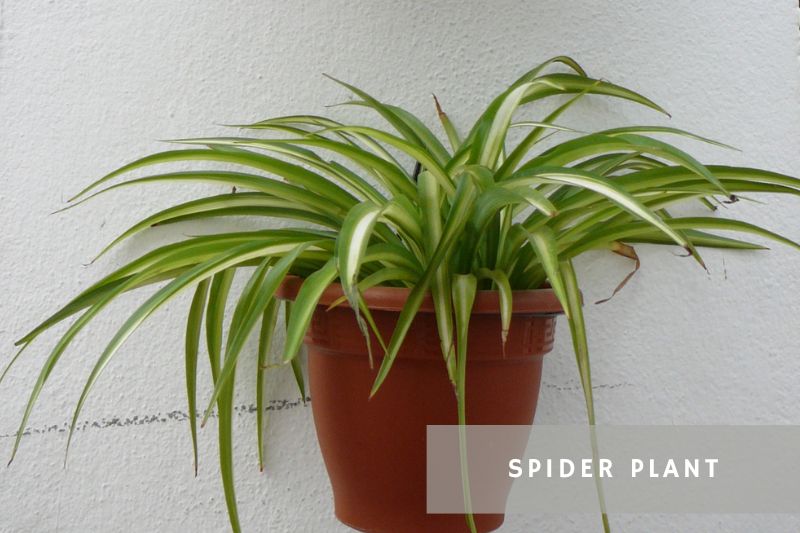
This easy-going houseplant is a classic, with arching green and white striped leaves. Spider plants are not just a pretty face, though. They’re known to be effective air purifiers, making your indoor space fresher.
- Native to: South Africa
- Mature size: Up to 2 ft wide
- Perfect for: Those who appreciate vintage charm and clean air
7. Jade plant (Crassula ovata)
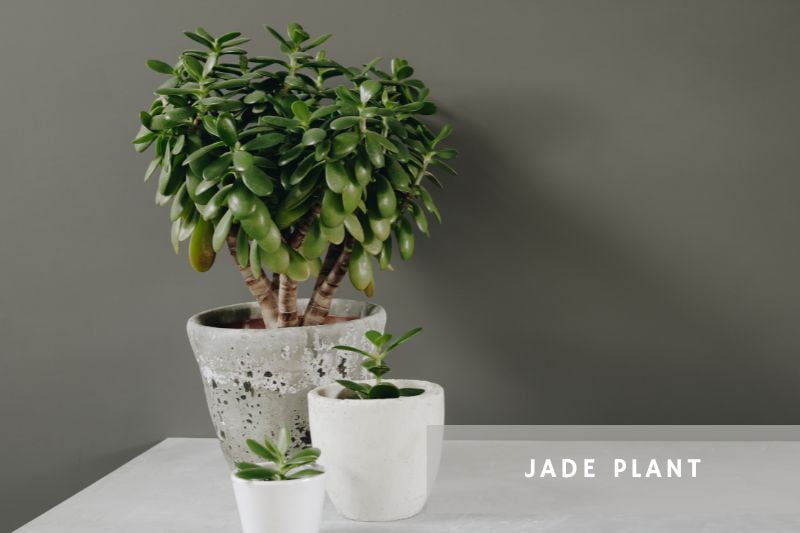
Thick, fleshy leaves that store water and a reputation for bringing good fortune make the Jade plant a popular choice. Who doesn’t want a plant that promises wealth and only asks for occasional watering?
- Native to: South Africa
- Mature size: Up to 3 ft
- Perfect for: Those seeking prosperity and beginner gardeners
And if you treat it right, this succulent will also produce lovely flowers!
8. Yucca (Yucca spp.)
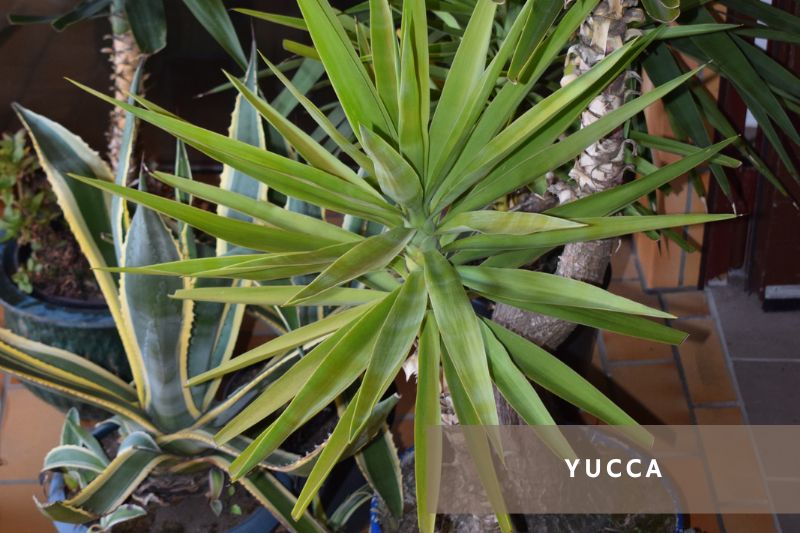
Yuccas are a versatile addition to your indoor plant collection. Their spiky leaves and towering height provide a striking silhouette. Plus, they’re hardy and drought-resistant, so they won’t complain if you’re occasionally forgetful with the watering can.
- Native to: Americas and Caribbean
- Mature size: Up to 10 ft
- Perfect for: Lovers of minimalist aesthetics and varied soil conditions
9. Dragon Tree (Dracaena marginata)
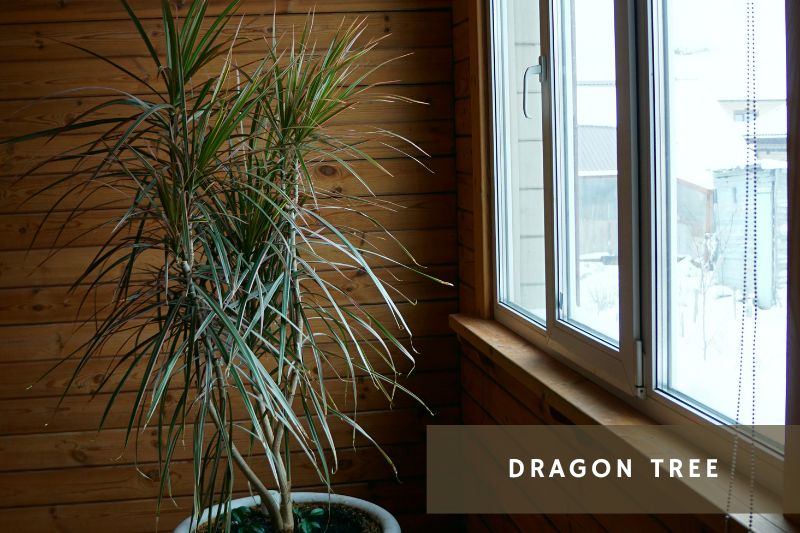
Dragon Trees are striking with their slender trunks and vibrant, spiky leaves. They’re also tough cookies and won’t keel over if you forget to water them. Dragon trees are said to bring luck and prosperity, making them a great choice for the home or office.
- Native to: Madagascar
- Mature size: Up to 6 ft
- Perfect for: Feng Shui practitioners and those who need forgiveness in their watering routine
Check out our article for more information on how to care for a Dragon Tree.
10. Air Plants (Tillandsia spp.)
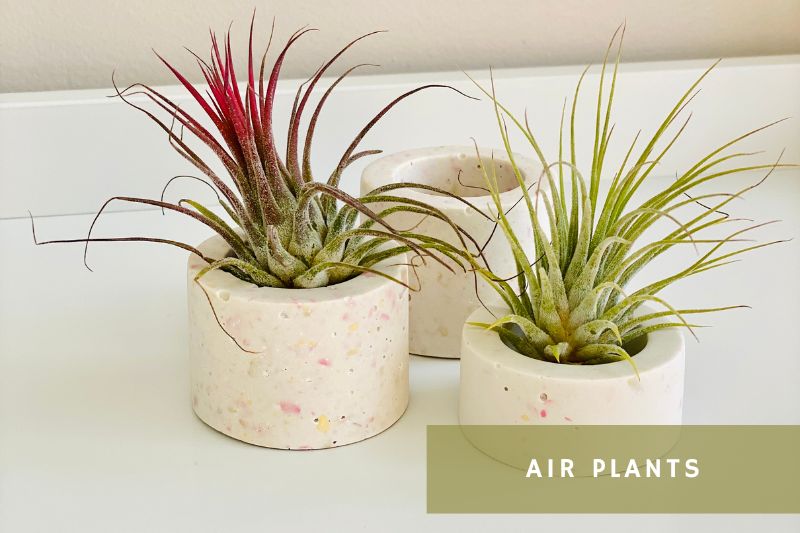
Are you a fan of the unconventional? Then, Air Plants are for you. These plants don’t need soil to survive, just a good soaking now and then. You can get creative with displaying air plant – hang them, mount them, or place them in a terrarium. The sky’s the limit!
- Native to: Americas
- Mature size: Varies by species
- Perfect for: Those who hate dirt and enjoy unusual displays
11. Aloe Vera (Aloe vera spp.)
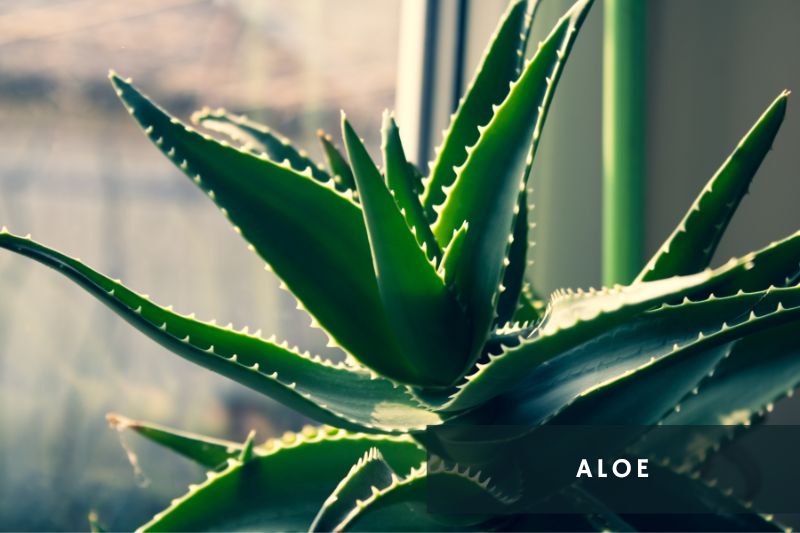
Aloe Vera is an excellent indoor plant choice for those who love sunlight. Its succulent leaves are famous for their healing properties. It’s practically a plant pharmacy that doesn’t mind if you forget to water it every once in a while.
- Native to: Arabian Peninsula
- Mature size: Up to 3 ft
- Perfect for: Sun-lovers
12. Bromeliads
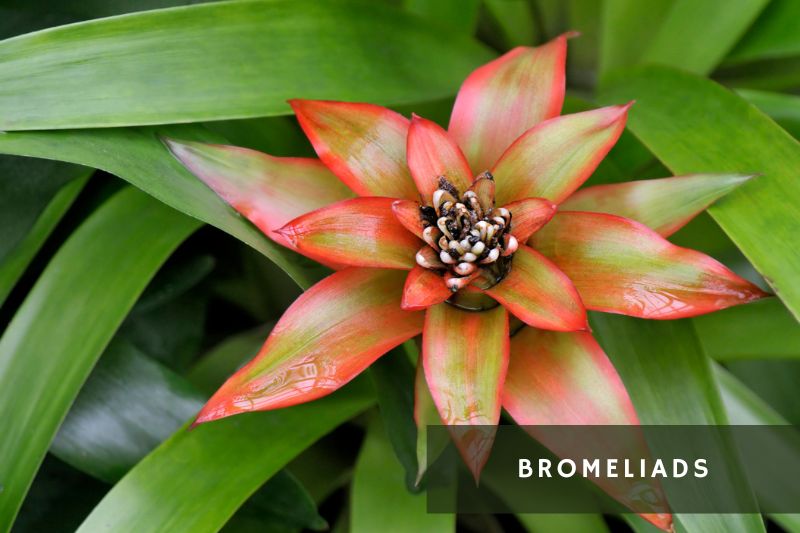
With their vibrant, long-lasting blooms, Bromeliads might seem like divas. But don’t let those looks fool you – these tropical beauties are surprisingly easy to care for and can handle varying light conditions.
- Native to: Americas
- Mature size: Up to 3 ft
- Perfect for: Adding a pop of color to your indoor greenery
13. Peace Lily (Spathiphyllum)
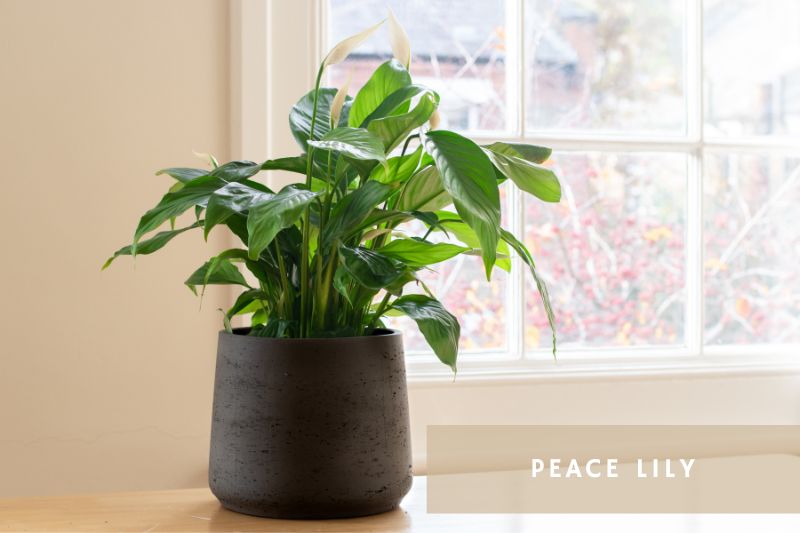
Peace lilies are pretty plants that boast glossy green leaves and elegant white flowers. They are tolerant to low light and forgiving if you forget to water them from time to time. They’re also known to help improve indoor air quality!
- Native to: Tropical Americas and Southeastern Asia
- Mature size: Up to 3 ft
- Perfect for: Low-light conditions and occasional forgetfulness
14. Rubber Plant (Ficus Elastica)
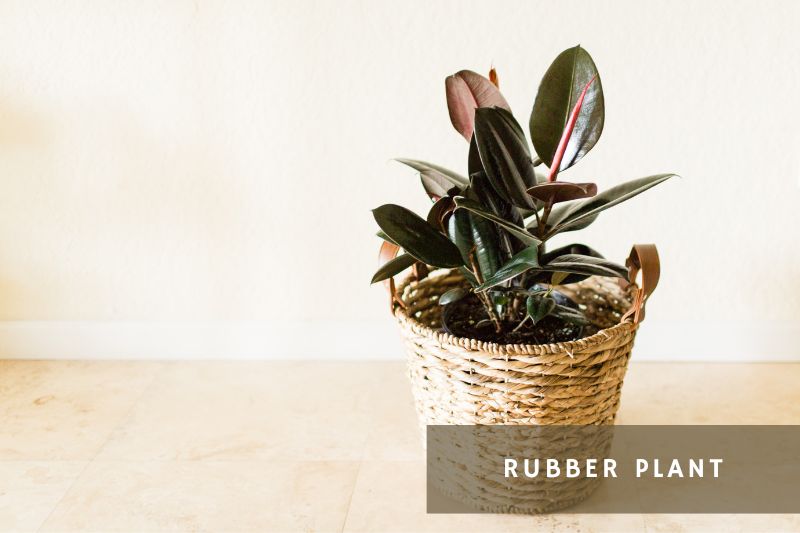
Rubber plants have striking dark green leaves and can grow to impressive heights, making them a perfect statement plant for your home. They’re pretty forgiving and can tolerate lower light conditions, but they also enjoy a bit of sunshine.
- Native to: Eastern South Asia
- Mature size: Up to 8 ft
- Perfect for: Those who love statement pieces and darker corners
15. English Ivy (Hedera Helix)
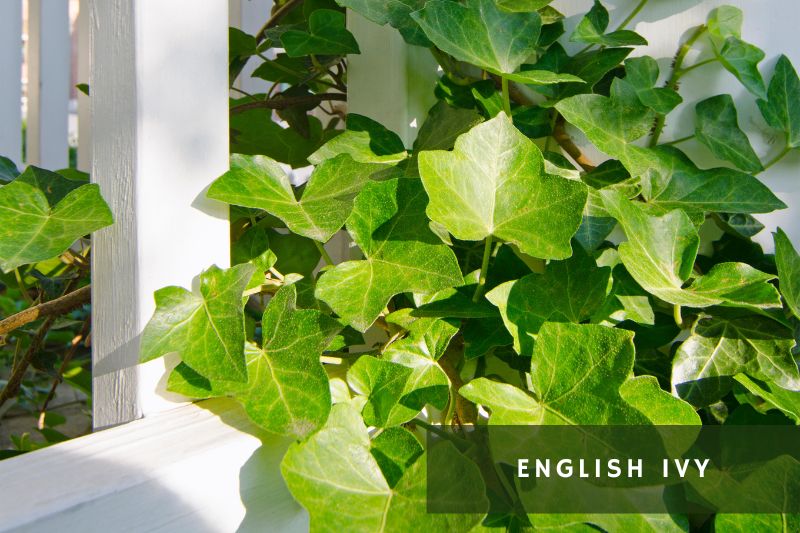
English Ivy is a beautiful vining plant that can be trained to grow on trellises, cascading from hanging baskets, or spreading across tabletops. It prefers indirect light and cooler temperatures, making it a great plant for indoor settings. Ivy’s love for climbing and spreading is just another part of its charm.
- Native to: Europe and Western Asia
- Mature size: Up to 50 ft (when grown outdoors)
- Perfect for: Those who love vertical gardens
16. Chinese Money Plant (Pilea Peperomioides)
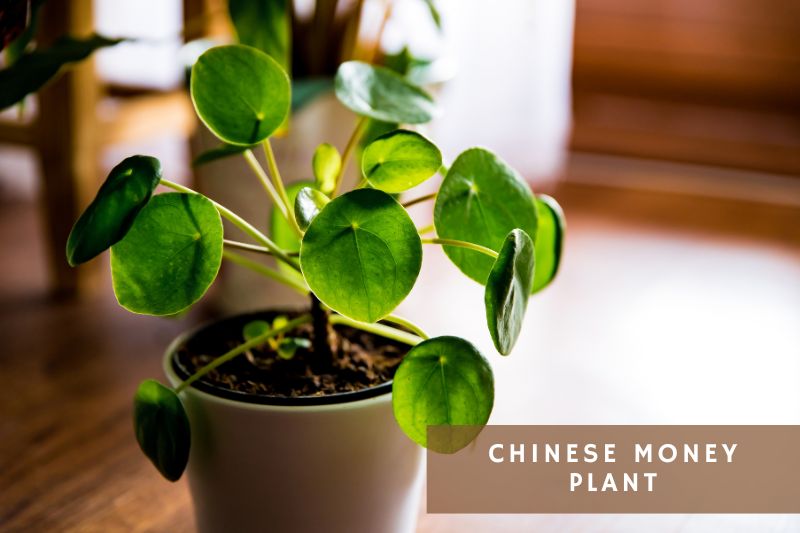
The Chinese Money Plant, with its round leaves, has a modern and quirky look. It’s easy to care for and quickly propagates, making it an ideal plant for sharing with your friends.
- Native to: Southern China
- Mature size: Up to 1 ft
- Perfect for: Those who love modern aesthetics and sharing with friends
17. Lucky Bamboo (Dracaena sanderiana)
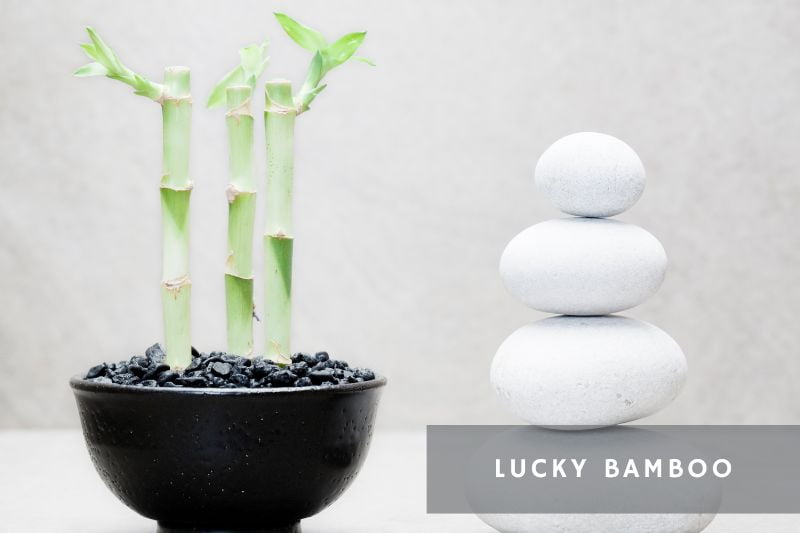
Despite its name, Lucky Bamboo is not actually a bamboo but a Dracaena. It’s a popular feng shui plant that’s super easy to grow in water and low light conditions. Just replace the water every two weeks, and it’s good to go!
- Native to: Central Africa
- Mature size: 2-3 ft
- Perfect for: Those who love water-dwelling plants and Asian-inspired aesthetics
18. Monstera Deliciosa
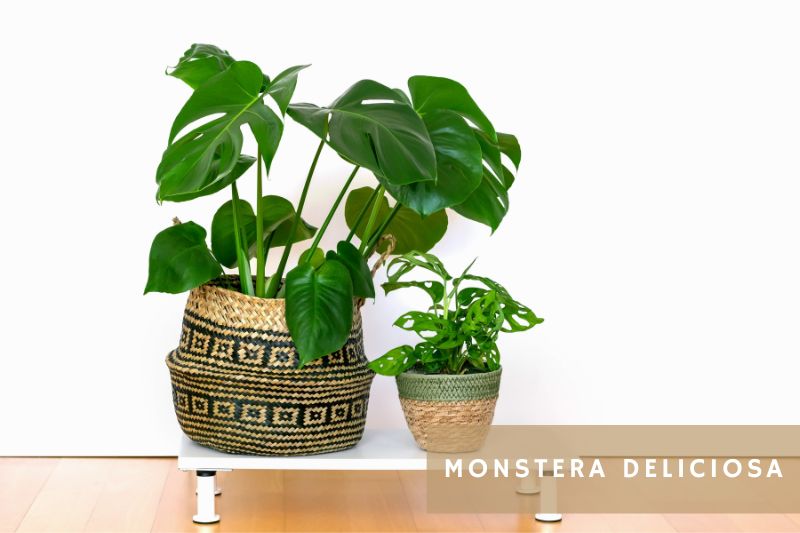
Also known as the “Swiss Cheese Plant,” the Monstera deliciosa has large, glossy green leaves with unique splits and holes. It thrives in bright, indirect light and prefers its soil to dry out between waterings.
- Native to: Central America
- Mature size: Up to 8 ft
- Perfect for: Those who want a statement plant
19. String of Pearls (Senecio rowleyanus)
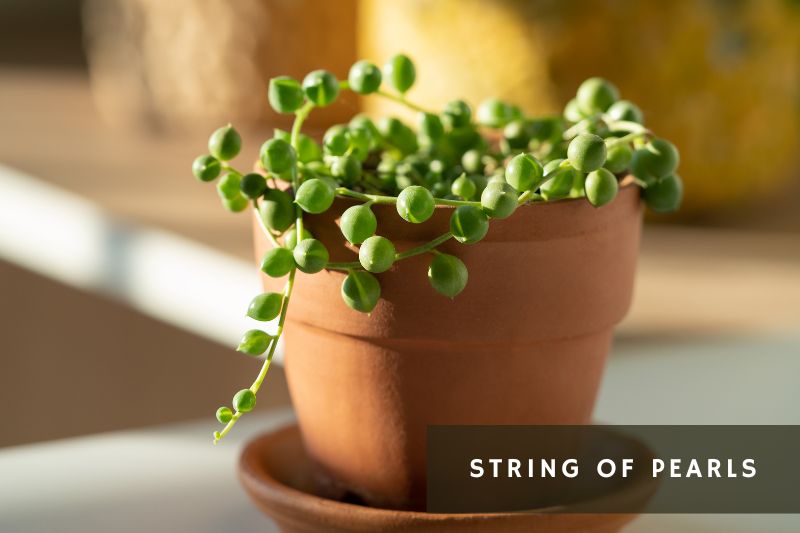
The String of Pearls is a succulent that’s perfect for adding a cascading element to your indoor garden. It has pea-like leaves along its stems and requires bright light and infrequent watering.
- Native to: Southwestern Africa
- Mature size: Trailing up to 3 ft
- Perfect for: Hanging baskets or high shelves
20. Cast Iron Plant (Aspidistra elatior)
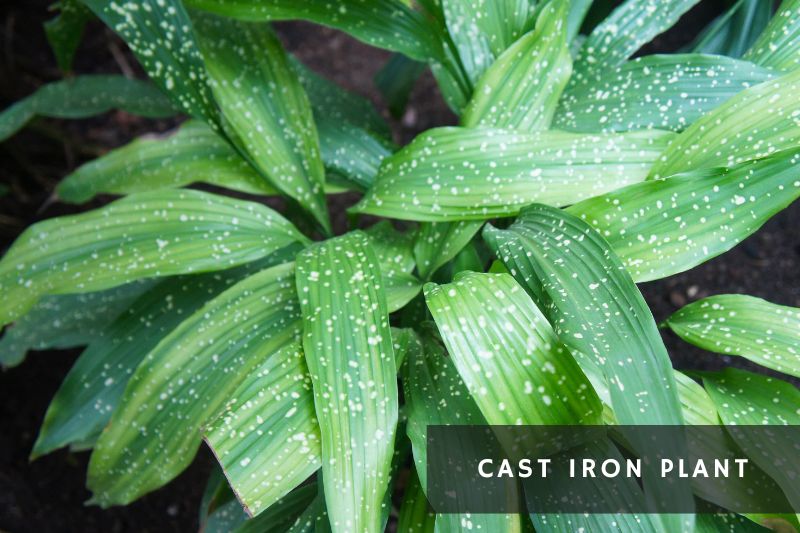
The Cast Iron Plant is as tough as its name suggests. It can tolerate neglect, low light, and extreme temperatures, making it a fantastic choice for any plant lover looking for a nearly indestructible option.
- Native to: Japan and Taiwan
- Mature size: 1-2 ft
- Perfect for: Low-light conditions and neglect
Conclusion
Indoor plants not only beautify our homes, but they also have a profound impact on our well-being, purifying the air and bringing a calming touch of nature indoors. This extensive list of low maintenance houseplants offers a variety of options for every home and lifestyle. Whether you have a sun-drenched room or a shaded corner, there’s a plant in this guide that’s perfect for you.
Remember, every plant needs some care and attention. But with these easy-care options, you can enjoy the benefits and beauty of indoor gardening, even with a busy schedule. With a little bit of love and the right conditions, these low maintenance houseplants will thrive, creating an indoor oasis that lasts.

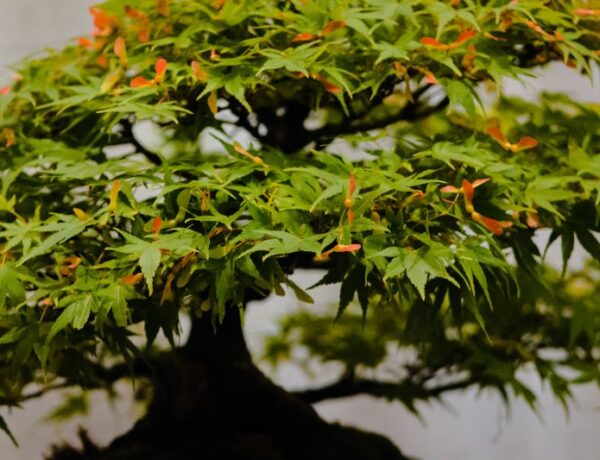
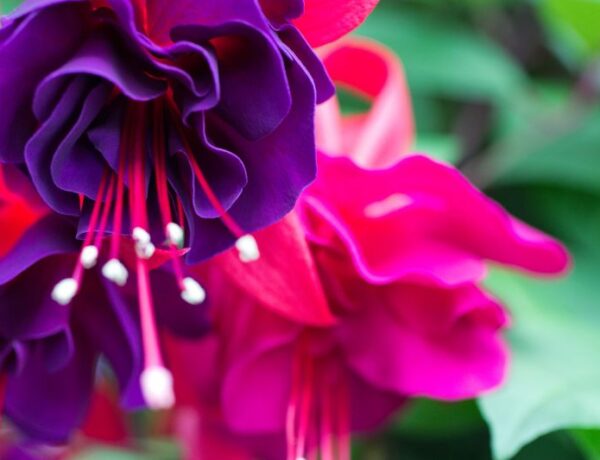
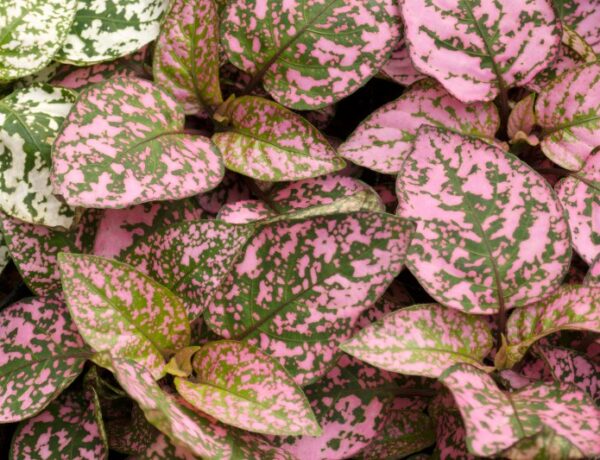


No Comments